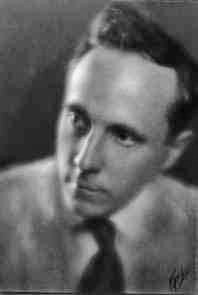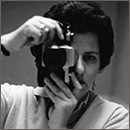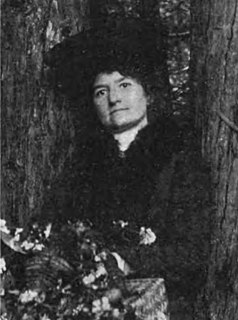
Group f/64 was a group founded by seven 20th-century San Francisco Bay Area photographers who shared a common photographic style characterized by sharply focused and carefully framed images seen through a particularly Western (U.S.) viewpoint. In part, they formed in opposition to the pictorialist photographic style that had dominated much of the early 20th century, but moreover, they wanted to promote a new modernist aesthetic that was based on precisely exposed images of natural forms and found objects.

Imogen Cunningham was an American photographer known for her botanical photography, nudes, and industrial landscapes. Cunningham was a member of the California-based Group f/64, known for its dedication to the sharp-focus rendition of simple subjects.

Edward Henry Weston was a 20th-century American photographer. He has been called "one of the most innovative and influential American photographers…" and "one of the masters of 20th century photography." Over the course of his 40-year career Weston photographed an increasingly expansive set of subjects, including landscapes, still lives, nudes, portraits, genre scenes and even whimsical parodies. It is said that he developed a "quintessentially American, and specially Californian, approach to modern photography" because of his focus on the people and places of the American West. In 1937 Weston was the first photographer to receive a Guggenheim Fellowship, and over the next two years he produced nearly 1,400 negatives using his 8 × 10 view camera. Some of his most famous photographs were taken of the trees and rocks at Point Lobos, California, near where he lived for many years.

Tina Modotti was an Italian photographer, model, actress, and revolutionary political activist for the Comintern. She left Italy in 1913 and moved to the USA, where she worked as a model and subsequently as a photographer. In 1922 she moved to Mexico, where she became an active Communist.

Ruth Bernhard was a German-born American photographer.

Ruth-Marion Baruch (1922–1997) was an American photographer remembered for her pictures of the San Francisco Bay Area in the 1960s. Baruch was in the first class of students at the California School of Fine Arts begun by Ansel Adams and Minor White after World War II. These include a series on the Black Panther Party taken from July to October 1968 in collaboration with photographer Pirkle Jones, and a series on the hippies of Haight-Ashbury. Baruch's photographs were exhibited in Perceptions at the San Francisco Museum of Art in 1954 as well as Edward Steichen's New York Museum of Modern Arts exhibition, The Family of Man in 1955.

Laura Adams Armer was an American artist and writer. In 1932, her novel Waterless Mountain won the Newbery Medal. She was also an early photographer in the San Francisco Bay Area.

Adelaide Hanscom Leeson was an early 20th-century artist and photographer who published some of the first books using photography to illustrate literary works.

Sonya Noskowiak was an American photographer and member of the famous San Francisco photography collective Group f/64 that included Ansel Adams and Edward Weston.
Alma Ruth Lavenson was an American photographer of the first half of the 20th century. She worked with and was a close friend of Ansel Adams, Imogen Cunningham, Edward Weston and other photographic masters of the period.

Benjamen Chinn was an American photographer known especially for his black and white images of Chinatown, San Francisco and of Paris, France in the late 1940s and early 1950s.
California Tonalism was art movement that existed in California from circa 1890 to 1920. Tonalist are usually intimate works, painted with a limited palette. Tonalist paintings are softly expressive, suggestive rather than detailed, often depicting the landscape at twilight or evening, when there is an absence of contrast. Tonalist paintings could also be figurative, but in them, the figure was usually out of doors or in an interior in a low-key setting with little detail.
Grete Stern was a German-Argentine photographer. Like her husband Horacio Coppola, she helped modernize the visual arts in Argentina, and presented the first exhibition of modern photographic art in Buenos Aires, in 1935.
Jane Reece was a highly acclaimed American pictorial photographer of the early 20th century. She lived most of her life in Dayton, Ohio and was active in the local, national and international photography scenes. During her 40-year career she exhibited in more than 100 photography salons and shows around the world, receiving many awards, prizes and honors. Reece is now recognized as one of Dayton's most prominent artists.

Dody Weston Thompson was a 20th-century American photographer and chronicler of the history and craft of photography. She learned the art in 1947 and developed her own expression of “straight” or realistic photography, the style that emerged in Northern California in the 1930s. Dody worked closely with contemporary icons Edward Weston, Brett Weston and Ansel Adams during the late 1940s and through the 1950s, with additional collaboration with Brett Weston in the 1980s.
Oscar Maurer (1870–1965) was a nationally recognized Pictorialist photographer based in California. His photographs appeared in Camera Work, Camera Craft, The Camera, and other photography journals. His studio in Berkeley, designed by Bernard Maybeck and built in 1907, is an architectural landmark.
Nata Piaskowski (1912–2004) was a Polish-born American photographer. Known for her fine composition, she took portraits and landscapes as well as series on the San Francisco psychedelic scene and the changing effects of the tide.

Ella Etna McBride was an American fine-art photographer, mountain climber, and centenarian known for her career achievements after age sixty. In addition to running her own photography studio for over thirty years, she also spent eight years running the photography studio of Edward S. Curtis.
Eileen Cowin is an American photographer and video artist known for employing the tools of mass media to produce images that provoke reflection, while conveying ideas. Driven by an interest in the nature of storytelling, narrative and the relationship between fiction and non-fiction, her imagery tends to explore chance, fate, memory and experience.
John Bertolino was an American photojournalist who photographed in Italy and the United States and was active in the 1950s and 1960s.
















